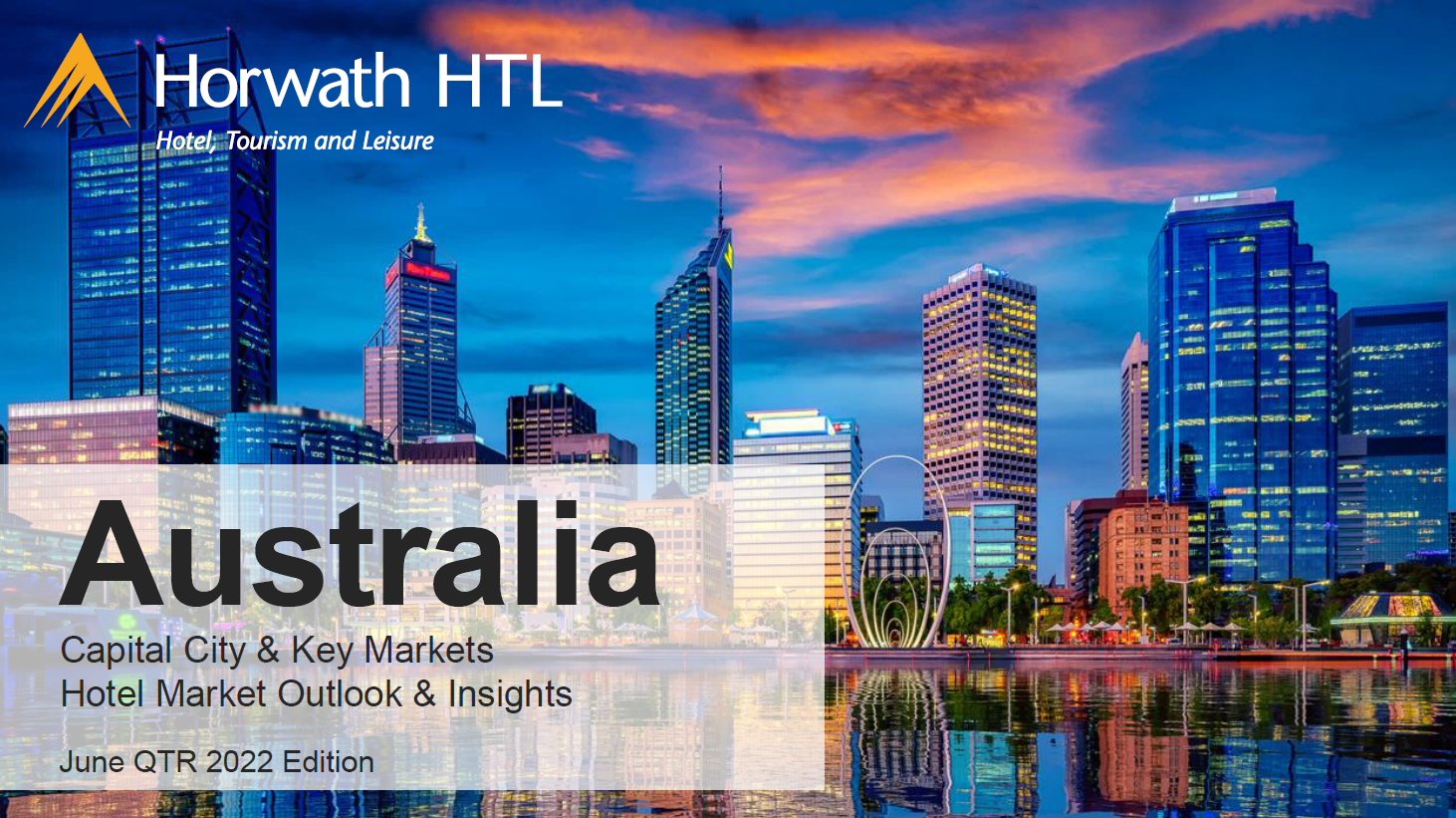
Report
Australia Key City Hotel Market Outlook
Market Recovery and Performance:
Australia’s economic outlook for 2022-23 is positive, driven by the reopening of international borders and a recovering labour market. The unemployment rate is projected to stabilize at 3.8%, with a population growth of 276,000 people. International tourism is expected to reach pre-pandemic levels by June 2024, contributing to the economic rebound.
Regional Economic Insights
- New South Wales (NSW): Shows strong recovery from the Omicron outbreak, with above-trend growth expected.
- Victoria (VIC): Faces challenges due to negative internal migration and halted population growth, requiring a restoration of population-driven growth.
- Queensland (QLD): Despite recent floods, the economic outlook remains positive, driven by recovery efforts.
- Western Australia (WA): Relies on exports to fuel growth amid weak domestic conditions.
- South Australia (SA): Needs sustained population growth to avoid reverting to pre-pandemic structural challenges.
- Tasmania (TAS): Must address structural challenges to maintain economic growth.
- Australian Capital Territory (ACT): Benefits from increased services exports offsetting a softening in household spending.
- Northern Territory (NT): Supported by rising government spending and commodity prices.
Tourism Recovery
- International Arrivals: Expected to return to 2019 levels by 2024, with certain regions like ACT, NT, VIC, and SA leading the recovery.
- Domestic Tourism: Forecasted to surpass pre-pandemic levels by 2023-24, with Victoria taking longer to recover due to prolonged lockdowns.
Hotel Market Performance
- RevPAR (Revenue per Available Room): Significant growth across key markets, with the Sunshine Coast showing the highest recovery at 150.2% of 2019 levels.
- Brisbane: 44.2% YoY growth.
- Canberra: 22.9% YoY growth.
- Adelaide: 25.9% YoY growth.
- Gold Coast: 35.1% YoY growth.
- Hobart: 30.5% YoY growth.
- Melbourne: 76.5% YoY growth.
- Newcastle: 2.8% YoY growth.
- Perth: 16.9% YoY growth.
- Sunshine Coast: 19.9% YoY growth.
- Sydney: 51.1% YoY growth.
Supply Pipeline
- Sydney: CAAGR of 3.1% from 2021 to 2026, with significant additions in upscale and luxury segments.
- Melbourne: CAAGR of 4.1%, with a focus on upscale and upper upscale segments.
- Brisbane: CAAGR of 1.7%, with notable growth in luxury segments.
- Perth: CAAGR of 1.8%, with ongoing developments in upper upscale and luxury segments.
- Other Regions: Varying growth rates with a mix of midscale, upscale, and luxury developments.
Key Trends and Insights
- Domestic Tourism Surge: Increased domestic travel has boosted hotel performance, particularly in leisure-focused regions like the Gold Coast and Sunshine Coast.
- Investment Trends: Focus on high-margin accommodation types such as luxury hotels and serviced apartments.
The outlook for 2023 is optimistic, with continued recovery in international and domestic tourism expected to drive growth. However, economic uncertainties and rising operational costs will pose challenges.
Download the report
For detailed charts, graphs, and further analysis, download the full report here





